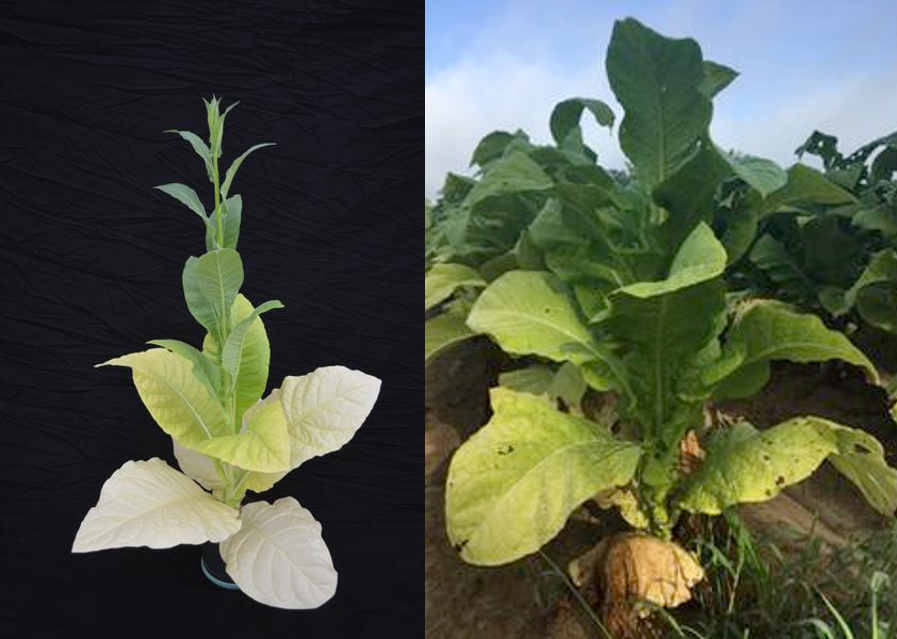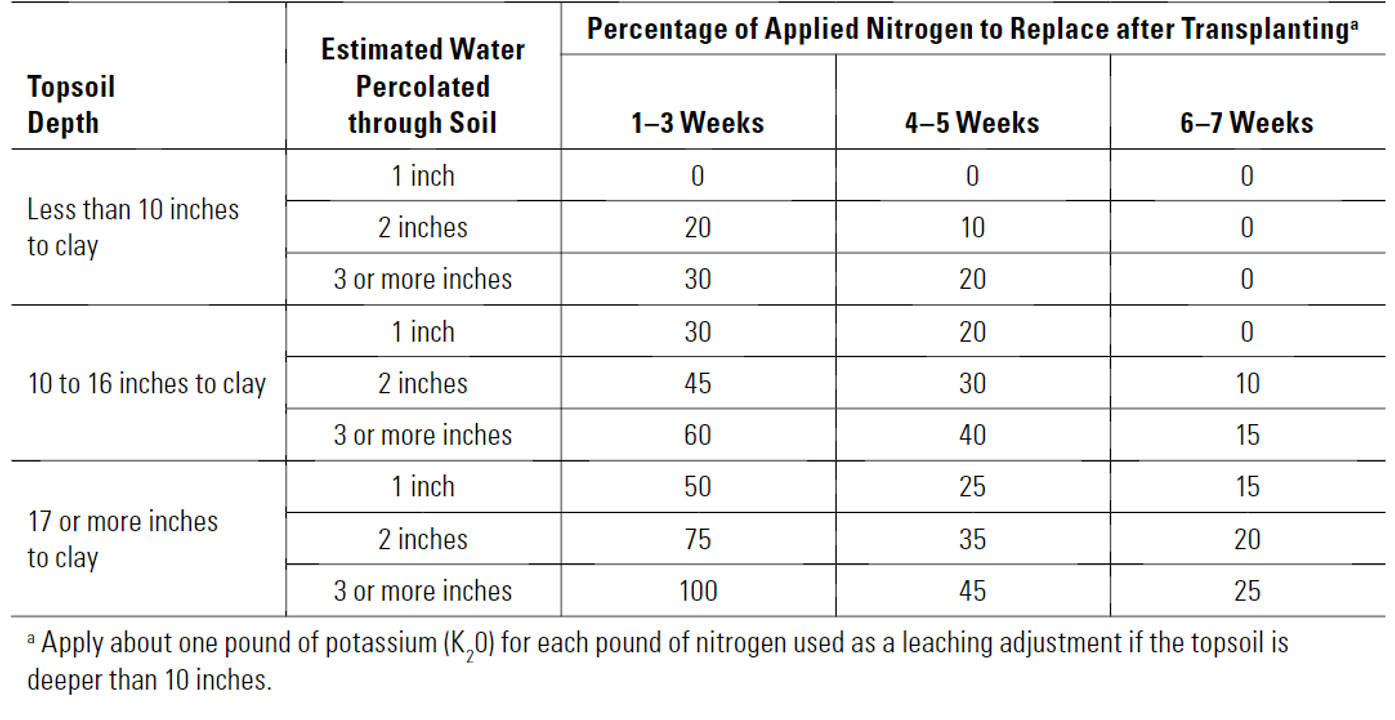From the Field-Agronomy Notes: Vol. 2, Num. 8
go.ncsu.edu/readext?461548
en Español / em Português
El inglés es el idioma de control de esta página. En la medida en que haya algún conflicto entre la traducción al inglés y la traducción, el inglés prevalece.
Al hacer clic en el enlace de traducción se activa un servicio de traducción gratuito para convertir la página al español. Al igual que con cualquier traducción por Internet, la conversión no es sensible al contexto y puede que no traduzca el texto en su significado original. NC State Extension no garantiza la exactitud del texto traducido. Por favor, tenga en cuenta que algunas aplicaciones y/o servicios pueden no funcionar como se espera cuando se traducen.
Português
Inglês é o idioma de controle desta página. Na medida que haja algum conflito entre o texto original em Inglês e a tradução, o Inglês prevalece.
Ao clicar no link de tradução, um serviço gratuito de tradução será ativado para converter a página para o Português. Como em qualquer tradução pela internet, a conversão não é sensivel ao contexto e pode não ocorrer a tradução para o significado orginal. O serviço de Extensão da Carolina do Norte (NC State Extension) não garante a exatidão do texto traduzido. Por favor, observe que algumas funções ou serviços podem não funcionar como esperado após a tradução.
English
English is the controlling language of this page. To the extent there is any conflict between the English text and the translation, English controls.
Clicking on the translation link activates a free translation service to convert the page to Spanish. As with any Internet translation, the conversion is not context-sensitive and may not translate the text to its original meaning. NC State Extension does not guarantee the accuracy of the translated text. Please note that some applications and/or services may not function as expected when translated.
Collapse ▲April 25th, 2017-
The final week of April has brought about a massive change in growing conditions for most of North Carolina. Much of the state experienced daily highs that approached 90° last week. Temperatures struggled to reach the high 50’s yesterday (April 24th) and might hit the mid-60’s today. Temperatures should moderate later in the week as we get back into the 80’s. At this point the temperature fluctuation is the least of our concern, as rainfall totals have surpassed seven inches in some Coastal Plain areas.
Rainfall estimates from the past 30 hours vary widely across the tobacco growing regions of our state (Table 1). Despite the wide variation, producers who have already transplanted tobacco and/or applied fertilizer (pre- or post-transplanting) should give serious consideration to fertilizer leaching adjustments. Estimating the amount of fertilizer lost due to excessive rainfall is very difficult, so we are forced to make a few general assumptions. What follows are some of the assumptions and considerations.
| Table 1. 30 Hour Rainfall Total for Tobacco Growing Areas of North Carolinaa | |
|
Location |
Rainfall (inches) |
|
Whiteville |
2.74 |
|
Kinston |
7.04 |
|
Rocky Mount |
4.10 |
|
Oxford |
4.55 |
|
Reidsville |
3.04 |
|
Jackson Springs |
2.01 |
|
Clayton |
6.60 |
|
Goldsboro |
5.60 |
|
Lewiston |
2.20 |
|
Clinton |
4.92 |
| a Data collected from research stations weather systems in each city and represent the period of Apr. 24 (12:00 a.m.) to Apr. 25th (6:00 a.m.). | |
- Where rainfall has exceeded two inches, consider replacing 100% of all nitrogen that had been applied to date.
- Where rainfall is less than two inches, consider replacing NO MORE than 50% of all nitrogen that had been applied to date. Additional adjustments can be made closer to layby if needed, but it is important to monitor crop response prior to doing so.
- For both scenarios, apply one pound of potassium for every one pound of nitrogen. Potassium is not as leachable as nitrogen and is typically applied at a 2:1 ratio; therefore, adjusting at a 1:1 ratio will bring the nutrients back to the preferred balance.
Additional comments:
- The rainfall totals documented in Table 1 are a great example of multiple fertilizer applications are preferred over a single application. Multiple fertilizer applications, separated by time and growth stage, hedge against severe nutrient losses in the event of a severe rainfall event.
- When making a leaching adjustment, consider using fertilizer sources absent of phosphorus. Phosphorus is not very leachable in the soil profile, therefore it is likely that the nutrient is still in place. This will reduce the cost of having to re-apply nutrients.
- Consider soil texture and depth to clay when making a decision regarding potassium fertilizer source. Applying K-Mag (22% K2O, 11% Magnesium, and 22% Sulfur) could prove beneficial in coarse soil textures where dolomitic lime has not been applied for more than two years. In this situation magnesium could be limiting. Keep in mind that no more than 30 lbs of magnesium is needed for a healthy tobacco crop. If magnesium is not believed to be limiting, then potassium sulfate (0-0-50) should suffice. As always, potassium chloride (0-0-60) is NOT recommended even at a reduced application rate.
- Multiple nitrogen sources are acceptable for leaching adjustments. Recent research has shown that that liquid materials (UAN, 24S, and CN-9) perform as well as dry materials (calcium nitrate, calcium ammonium nitrate, and ammonium sulfate). The single point worth considering when comparing these sources is cost. Typically is the UAN and 24S sources that are significantly cheaper than CN-9, calcium nitrate (dry), and calcium ammonium nitrate (dry) sources. Considering the added cost of re-applying fertilizer, material cost is likely to have a large impact on profit.
- Monitor fields closely for signs of nutrient deficiency. This is a great opportunity to use the Nutrient Diagnostic Key on the NCSU Tobacco Portal. Collecting tissue samples for laboratory analysis is another tool that will help aid in decision making as the season progresses. A few pictures have been included that provide an overview of nitrogen, potassium, sulfur, and magnesium deficiency (Figures 1-4).

Figure 1. Nitrogen (N) deficiency is characterized by pale color in older leaves. Nitrogen is plant mobile and appears in old tissue prior to being observed in younger tissue.
©2017 Forensic Floriculture

Figure 2. Potassium deficiency. Potassium (K) deficiency begins as “rim firing” in the mid-stalk position and progresses upward.

Figure 3. Sulfur deficiency is first characterized by yellowing in younger leaves then older leaves. Sulfur is not plant mobile, which is the reason why symptoms are first observed in young leaves. This fact is important when distinguishing between sulfur and nitrogen deficiency.
©2017 Forensic Floriculture

Figure 4. Magnesium deficiency. Magnesium deficiency is characterized by chlorosis (yellowing) of lower, older leaves and will progress into mid-stalk positions if uncorrected. Magnesium deficiency is referred to as “sand drowning” because it is more commonly observed in coarse, sandy soils. ©2017 Forensic Floriculture (left frame).
- The leaching adjustment recommendations provided in the previous section are very specific to our current situation. Producers should be aware that the 2017 NCSU Tobacco Production Guide contains additional information for leaching adjustments (page 65). For convenience, a table that summarizes the information found in the Production Guide is included in Figure 5.
- Foliar fertilizer applications are not recommended for leaching adjustments. It is reality that a fairly large quantity of nitrogen and potassium will be needed to correct for leaching losses. The large quantities needed will likely produce severe injury if applied to the plant foliage. Fertilizers applied foliar are only designed to spoon-feed small doses of select nutrients (primarily boron and manganese) and great risk is experienced when trying to feed more than 10 pounds of nitrogen and potassium.
- It is imperative that producers wait until fields are sufficiently dry before attempting to cultivate or apply fertilizer. This might be easier said than done when trying to prevent flopping/wilting; however, working wet soil can lead to issues (such as increased soil compaction and resistance) much later in the season. Of course, all measures should be taken to remove standing water from fields.
Lastly, if you have additional questions, please do not hesitate to contact your local N.C. Cooperative Extension Agent for assistance in decision making.



